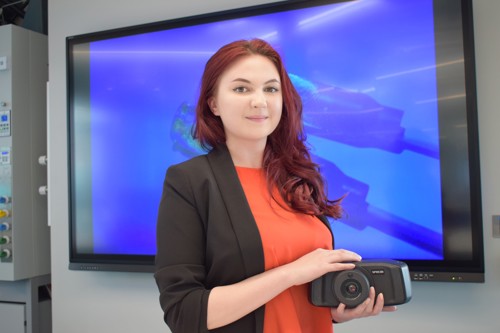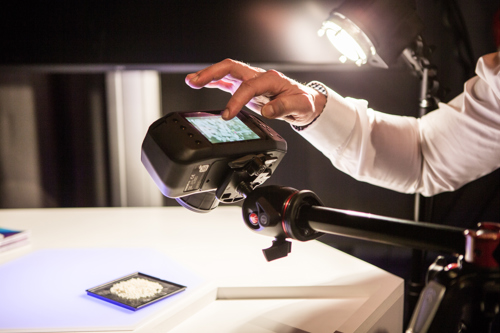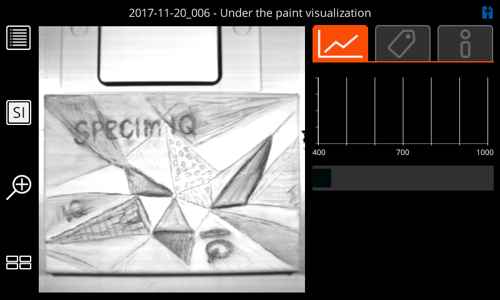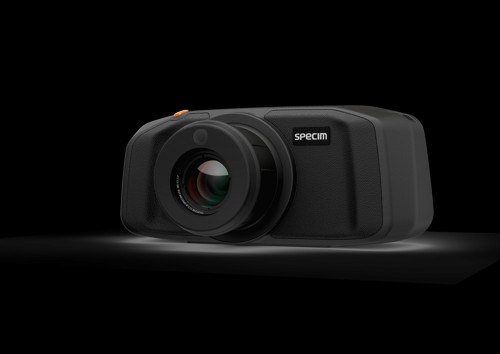Pause carousel
Play carousel

Rare new imaging technology with the potential to impact how police collect forensic evidence is the focus of a research project at Abertay University.
Abertay research student Keela Pikkarainen (above), from Finland, is investigating the capabilities of a new portable hyperspectral camera which can be used to analyse gunshot residue, age blood samples and determine whether documents such as cheques have been tampered with, among many other functions.
Combining reflectance spectroscopy with digital imaging, the new SPECIM IQ camera uses 204 different wavelength bands to pick up information invisible to the human eye.

Weighing just 1.3kg, the portability of the new technology holds the key to its use in forensics, with the previous set-up of separate scanners, cameras, computers, cables and power, weighing in at over 70kg.
Keela, who already has a BSc (Hons) Forensics Sciences degree from Abertay in Dundee, is currently working towards a Master of Science by Research, funded by manufacturer of the camera, Finland-based SPECIM Spectral Imaging Ltd.
She said the device – which is powerful enough to show an artist’s canvass line drawings beneath paintings (below) – has huge potential for gathering crime scene evidence, particularly as it is non-destructive.


“My work is looking at a number of possibilities, including use at crime scenes to screen for gunshot residue,” Keela said.
“The current method involves chemicals which can be non-specific, give false positives and can also alter the pattern of the residue. This is vital because that’s what is used to determine the sequence of events, such as where the shooter was standing in relation to the victim and the angle of the shot.
“Because it works like a normal camera it doesn’t require any contact with gunshot residue, blood sample or any preparation, so there’s no danger of harming the integrity of the evidence or contaminating it in any way. You would be able to go into a room, take an image and get the information right there and then.
“It has the potential to makes an investigation a lot faster and cheaper for police officers, instead of them going on a fishing trip around the room trying to look for this type of evidence.”

The Specim IQ (above) works by scanning the target with 204 wavelengths gaining information from the visible spectrum of light to the near-infrared.
This scan then provides an individual spectrum for each pixel in an image, giving information on both what materials are present and where they are located.
Keela added: “The research in this area is still new and it will take time to be adapted in common practice, but there are some very interesting possibilities.
“SPECIM Spectral Imaging Ltd was founded in 1995 in Oulu, Finland and are the leading international manufacturer of hyperspectral imaging systems. This new technology shows just how innovative they are and I’m delighted to be part of this international collaboration.”
Abertay’s Division of Science leads numerous projects, such as this one, where the application of science is used to solve real-world problems.